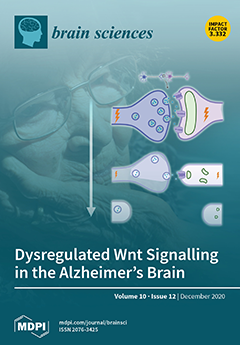Open AccessArticle
The Prognostic Role of Lactate Concentrations after Aneurysmal Subarachnoid Hemorrhage
by
Narcisse Ndieugnou Djangang, Pamela Ramunno, Antonio Izzi, Alessandra Garufi, Marco Menozzi, Daniela Diaferia, Lorenzo Peluso, Chiara Prezioso, Marta Talamonti, Hassane Njimi, Sophie Schuind, Jean-Louis Vincent, Jacques Creteur, Fabio Silvio Taccone and Elisa Gouvea Bogossian
Cited by 6 | Viewed by 1875
Abstract
Blood lactate concentrations are often used to assess global tissue perfusion in critically ill patients; however, there are scarce data on lactate concentrations after subarachnoid hemorrhage (SAH). We aimed to assess the prognostic role of serial blood lactate measurements on hospital mortality and
[...] Read more.
Blood lactate concentrations are often used to assess global tissue perfusion in critically ill patients; however, there are scarce data on lactate concentrations after subarachnoid hemorrhage (SAH). We aimed to assess the prognostic role of serial blood lactate measurements on hospital mortality and neurological outcomes at 3 months after SAH. We reviewed all SAH patients admitted to the intensive care unit from 2007 to 2019 and recorded the highest daily arterial lactate concentration for the first 6 days. Patients with no lactate concentration were excluded. Hyperlactatemia was defined as a blood lactate concentration >2.0 mmol/L. A total of 456 patients were included: 158 (35%) patients died in hospital and 209 (46%) had an unfavorable outcome (UO) at 3 months. The median highest lactate concentration was 2.7 (1.8–3.9) mmol/L. Non-survivors and patients with UO had significantly higher lactate concentrations compared to other patients. Hyperlactatemia increased the chance of dying (OR 4.19 (95% CI 2.38–7.39)) and of having UO in 3 months (OR 4.16 (95% CI 2.52–6.88)) after adjusting for confounding factors. Therefore, initial blood lactate concentrations have prognostic implications in patients with SAH; their role in conjunction with other prognostic indicators should be evaluated in prospective studies.
Full article
►▼
Show Figures






